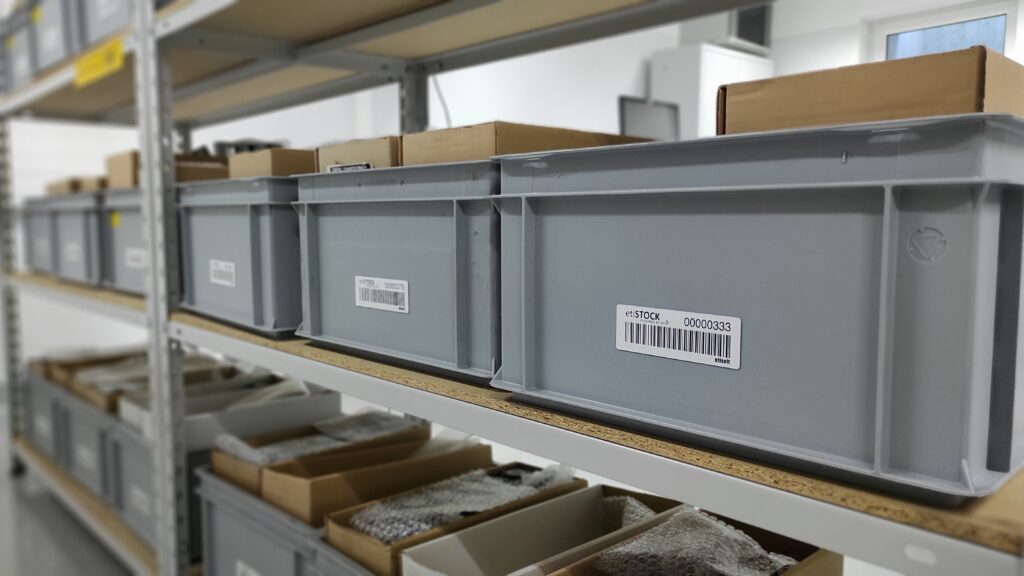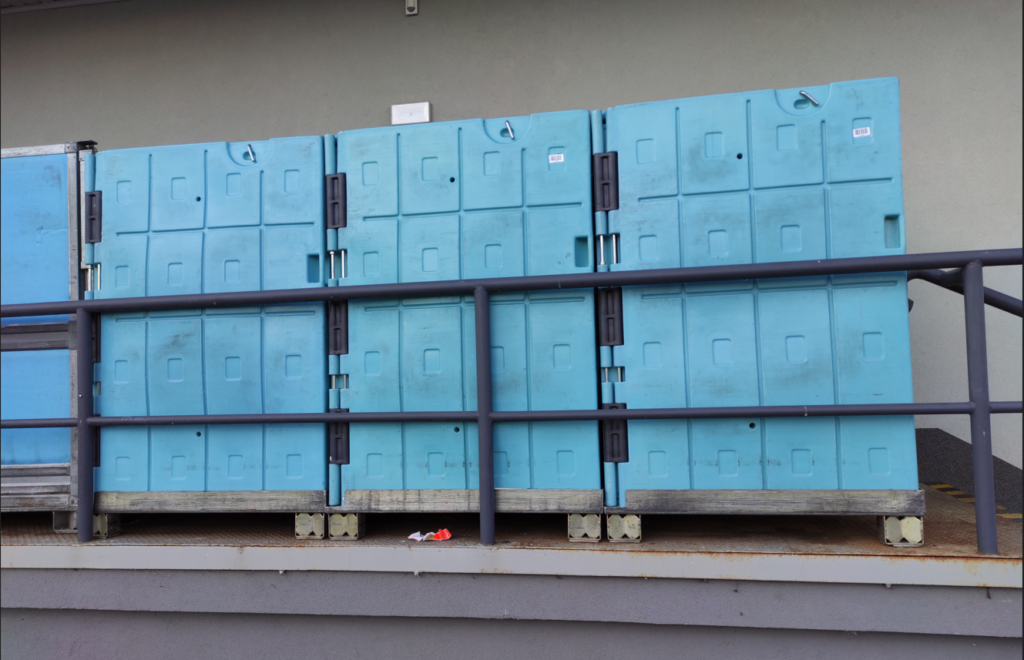
Labels for crates and pallets
Returnable Transport Items (RTI) and Returnable Packaging Items (RPI) are present in most industries. So, what are these RTIs and RPIs? Looking around, each of us has certainly come across such packaging more than once. Have you seen the wheeled carts being removed by workers from a loaded lorry on the unloading ramp outside the supermarket? The containers in shops where vegetables and fruits are displayed? The plastic openwork carts in which freshly baked bread is delivered from the bakery to the point of sale? Or a crate for amber-colored beverages? The few people who have contact with the warehouse can also add to the above list packaging that facilitates the work in logistics, both internal and external.
As you can see, returnable packaging is used in most industries. In accordance with the saying ‘trust but control’, it is worth labelling your packaging items to make it is easy to trace the very packaging item and to identify its contents. Labels for crates turn out to be a perfect solution.

What do all these packaging items have in common? Well, they are made of durable materials such as wood, plastic, or metal. They are designed to be reusable and are intended to move products safely and efficiently throughout the supply chain.
Labels for crates – label, control, trace!
The advantages of using plastic packaging are clearly visible. Once we have decided on such a solution, it would be good to take care of the identification of our resources.
This is where labels for reusable crates and pallets come to the rescue. You can easily apply your own logo, 1D or 2D code or description of the contents of the packaging to which it will be applied. For such a solution, we suggest a matching thermal transfer printer. By harnessing the properties of the resin ribbon, a durable print will be achieved. We also offer printed labels according to the specification sent with the possibility of using variable data from the database attached by the customer.
Specially selected adhesives and raw materials make the labels resistant to weather conditions, temperature fluctuations and multiple cleaning cycles. In addition, by covering the label with a layer of laminate, you can protect the graphic image against abrasion. In the marine environment, the label must meet strict requirements of BS 5609 standard, which (in a nutshell) specifies that the label must remain legible for at least 90 days and remain in place even when permanently submerged in salt water.

Not just self-adhesive labels
The variety of returnable packaging item surfaces and the environment in which the items will be used mean that the labels for crates we offer can be divided into four types:
- Self-adhesive flat labels, made of foil, printed or for self-printing, used for application to flat surfaces
- Self-adhesive multi-layer labels for indoor applications. Used when the surface is rough and there is a need to increase adhesion. The foam fills all the indentations, and the label remains flat, which improves the quality of code reading.
- Self-adhesive multi-layer labels for use in extreme conditions. Such labels are additionally resistant to chemical agents, weather conditions and remain in place during and after the high-pressure, high temperature washing process.
- Adhesive-free labels. Used for labelling KLT and GLT containers used in the automotive industry. They must be compliant with the 4902, 4994, 5501 standards of the German Association of the Automotive Industry. The dimensions and layout of the printed information and the encoding method are predetermined.
Benefits of labelling containers with unique numbers
If each container is labelled with a unique number, it is much easier to manage their inventory and turnover. We know exactly:
- how many containers are available
- which containers are most frequently in circulation
- which customer keeps our packaging item
- whether they have returned damaged.
A lack of control results in increased costs for purchasing new packaging items and the risk of missed shipping deadlines. To increase the comfort related to reading codes it is best to label containers with two labels on opposite sides. We can also use labels to support picking and warehousing processes often performed by AGVs and smart warehouse systems.
Be clever, use RFID
Keeping pace with technological developments and wishing to facilitate the handling processes of RTIs, you can additionally use the RFID (Radio Frequency Identification) technology, which is becoming more and more popular. By equipping labels with an additional tag, which consists of an antenna and a chip, you can significantly expand its possibilities. The largest advantage is that multiple tags can be read simultaneously. Depending on the antenna used in the RFID tag, the reading distance becomes longer or shorter. The undeniable advantage is the fact that the memory content can be modified. Therefore, it is possible to edit information about, for example, the contents of a container, at any time. You can use maintenance-free gates and mobile RFID readers to read the stored data.
The selection of the appropriate label or RFID tag for crates depends on the type of packaging, the raw material used and the conditions in which it will be used.
If you would like to label your RTIs, please contact us. We will select the best solution suited to your needs!
